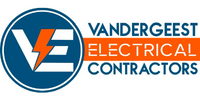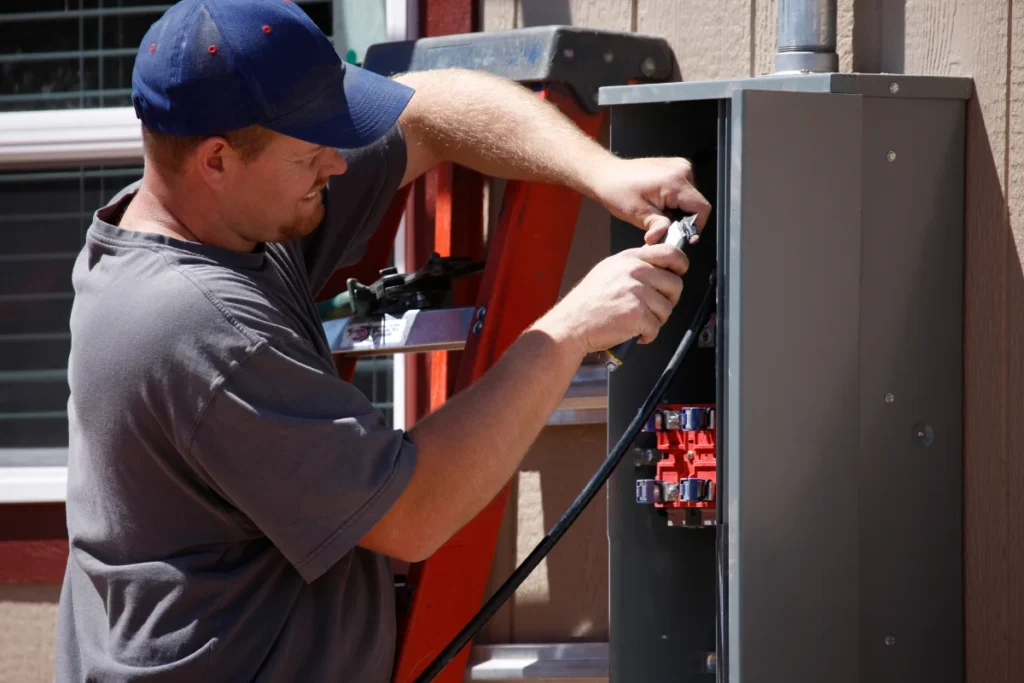If your home dates back to the late 19th or early 20th century, there’s a significant chance it features an outdated electrical system known as knob and tube (K&T) wiring. This system was standard practice until about the mid-1900s and is often found in many classic homes. While knob and tube wiring was deemed safe and effective during its time, today’s increased electrical demands combined with the natural aging of such systems can present various safety risks.
It is crucial for homeowners with this type of wiring to have their electrical systems thoroughly inspected by professionals to verify that they are still functional and meet current local electrical codes. Over the years, the cumulative effects of wear and tear, along with piecemeal repairs and modifications, can compromise the integrity of the wiring, potentially overloading the system and increasing the risk of fire or electrical shocks.
Understanding the specific hazards associated with knob and tube wiring is essential for maintaining a safe electrical system in your home. Moreover, it’s important to refrain from trying to handle or modify any aspect of K&T wiring on your own. Altering this type of wiring without the necessary expertise can be extremely dangerous, leading to severe injuries or extensive property damage due to electrical fires or shocks. Always ensure that any work on your home’s electrical wiring is conducted by a licensed electrician who is familiar with old and potentially fragile systems like K&T to maintain safety and compliance with all relevant standards.
What is Knob and Tube Wiring?
Knob and tube wiring is a vintage electrical system that uses insulated copper wires threaded through porcelain or ceramic knobs and tubes. The knobs keep the wires properly spaced and parallel to the wooden framework of the house, while the tubes guide the wires through the framing, preventing them from fraying or touching the wood. If you take a look around your attic, basement, or under your floorboards, you might notice the telltale signs of an original knob and tube wiring system.
The Dangers of Knob & Tube Wiring
According to the National Fire Protection Association, half of all home fires originate from problems with electrical distribution, lighting, and power transfer equipment. Knob and tube wiring, in particular, has garnered a poor reputation for safety due to frequent improper repairs and modifications. This system often relies on outdated hardware, and when combined with insulation that fails to meet modern safety standards, it presents a higher-than-average risk of causing significant damage to homes.
Here are some of the most common issues associated with knob and tube wiring that could jeopardize your home’s safety.
– K&T Wiring Is Not Grounded
Knob and tube wiring systems lack a crucial component found in modern electrical setups: the ground wire. But what exactly is a ground wire? A ground wire is an essential safety feature that directs excess electricity safely into the ground beneath your home. This provides a safe outlet for electrical surges or faults, preventing potential hazards. When you see an outlet with three holes instead of two, it means the outlet includes a ground wire.
Most contemporary outlets feature three holes, ensuring that appliances and devices are properly grounded. However, knob and tube wiring systems are limited to two-pronged outlets that conduct electricity without a grounding mechanism. While prong adapters can be used, they don’t solve the underlying issue, leaving your appliances or devices ungrounded and increasing the risk of electrical shock. Additionally, two-pronged outlets often fail to meet current local electrical codes, necessitating eventual replacement to reduce the risk of electrical fires and enhance overall safety.
– Aging Insulation on Knob and Tube Wiring
The insulation on knob and tube wiring tends to deteriorate over time. This can lead to exposed wires, which significantly increases the risk of electrical fires and short circuits.
– Inadequate Capacity from Knob and Tube Wiring
Knob and tube wiring was designed for the electrical demands of the early 20th century. Modern homes with numerous appliances and electronics can easily overload these systems, leading to overheating and potential fire hazards.
– Improper Modifications on the Knob & Tube Wiring
Over the years, many knob and tube systems have been improperly modified or repaired by unqualified individuals. These modifications can compromise the safety and integrity of the wiring.
– No Circuit Breakers for the K&T Wiring
Many homes with knob and tube wiring lack modern circuit breakers and instead rely on outdated fuse boxes. This can make it harder to prevent and manage electrical overloads and shorts.
– Increased Insurance Costs
Due to the inherent risks associated with knob and tube wiring, many insurance companies are reluctant to provide coverage or may charge higher premiums for homes with this type of wiring.
– Insufficient Insulation Clearance
Modern insulation standards require certain clearances around electrical wiring to prevent overheating. Knob and tube wiring often lacks this clearance, especially in attics and walls, posing a fire risk.
What To Do If Your Home Has Knob and Tube Wiring
The presence of a knob and tube wiring system in your home doesn’t necessarily mean it needs to be removed and replaced immediately. However, it’s crucial to have a professional inspect the system for any potential hazards. Regular inspections can identify issues such as damaged insulation, improper modifications, and overloading, ensuring your home remains safe.
If the time has come to replace the older system, the cost to rewire a home typically ranges from $1,500 to $10,000, depending on the complexity of the rewiring job and the size of the new service panel. Always prioritize your home’s electrical safety and avoid attempting to rewire your home on your own.
If you have knob and tube wiring and are concerned about its condition, contact a qualified electrician in your area. They will thoroughly inspect your wiring system for damage or improper modifications and recommend necessary electrical upgrades or added protection to reduce the risk of shock and fire.
Knob and Tube Wiring Safety Tips
Ensuring the safety of a home with knob and tube wiring requires regular inspections and careful management. Here are some essential safety tips to keep in mind:
- Regular Inspections: Have your knob and tube wiring system inspected by a licensed electrician regularly to identify any signs of wear, damage, or improper modifications.
- Avoid Overloading Circuits: Do not overload circuits with too many appliances or devices, as knob and tube wiring was not designed to handle the electrical demands of modern homes.
- Install Ground Fault Circuit Interrupters (GFCIs): Use GFCIs in areas where water is present, such as kitchens, bathrooms, and outdoor spaces, to reduce the risk of electrical shock.
- Avoid DIY Modifications: Never attempt to modify or repair knob and tube wiring yourself. Always hire a qualified electrician to handle any electrical work.
- Check for Insulation Contact: Ensure that no insulation materials are in direct contact with the wiring, as this can lead to overheating and potential fire hazards.
- Upgrade Outlets: If possible, upgrade to three-pronged outlets with proper grounding to enhance safety. Avoid using two-pronged adapters as a permanent solution.
- Look for Warning Signs: Be aware of signs of electrical issues such as flickering lights, burning smells, buzzing sounds, or tripped circuit breakers. These can indicate underlying problems with the wiring.
- Use Appropriate Light Bulbs: Ensure that light fixtures connected to knob and tube wiring use bulbs with the correct wattage to prevent overheating.
- Limit the Use of Extension Cords: Avoid relying on extension cords for long-term use, as they can overload the electrical system and pose safety risks.
- Keep Flammable Materials Away: Ensure that flammable materials are kept away from any exposed wiring to reduce the risk of fire.
- Consider Upgrading: If your knob and tube wiring system is significantly aged or shows signs of deterioration, consider upgrading to a modern electrical system for enhanced safety and compliance with current codes.
- Label Circuit Breakers and Fuses: Clearly label circuit breakers and fuses to quickly identify and manage circuits during maintenance or in case of an emergency.
- Educate Family Members: Ensure that all family members are aware of the safety measures and potential risks associated with knob and tube wiring.
By following these safety tips, you can help mitigate the risks associated with knob and tube wiring and maintain a safer home environment. Regular professional assessments and cautious management are key to ensuring the continued safety of your electrical system.
Conclusion
While knob and tube wiring was a reliable electrical system in its time, modern electrical demands and safety standards have outpaced its capabilities. If your home still utilizes this outdated wiring, it’s crucial to understand the potential risks and take proactive steps to ensure your safety. Regular professional inspections, proper maintenance, and thoughtful management of your electrical load can help mitigate these risks. However, considering the advancements in electrical safety and technology, upgrading to a contemporary wiring system is often the best course of action.
Remember, your home’s electrical wiring is not something to overlook or handle without proper expertise. Always engage a licensed electrician to inspect, maintain, or replace knob and tube wiring. By prioritizing electrical safety, you can protect your home from potential hazards and ensure a secure, efficient, and reliable electrical system for years to come. Contact a professional electrician today to evaluate your wiring and discuss the best options for maintaining or upgrading your home’s electrical infrastructure.

